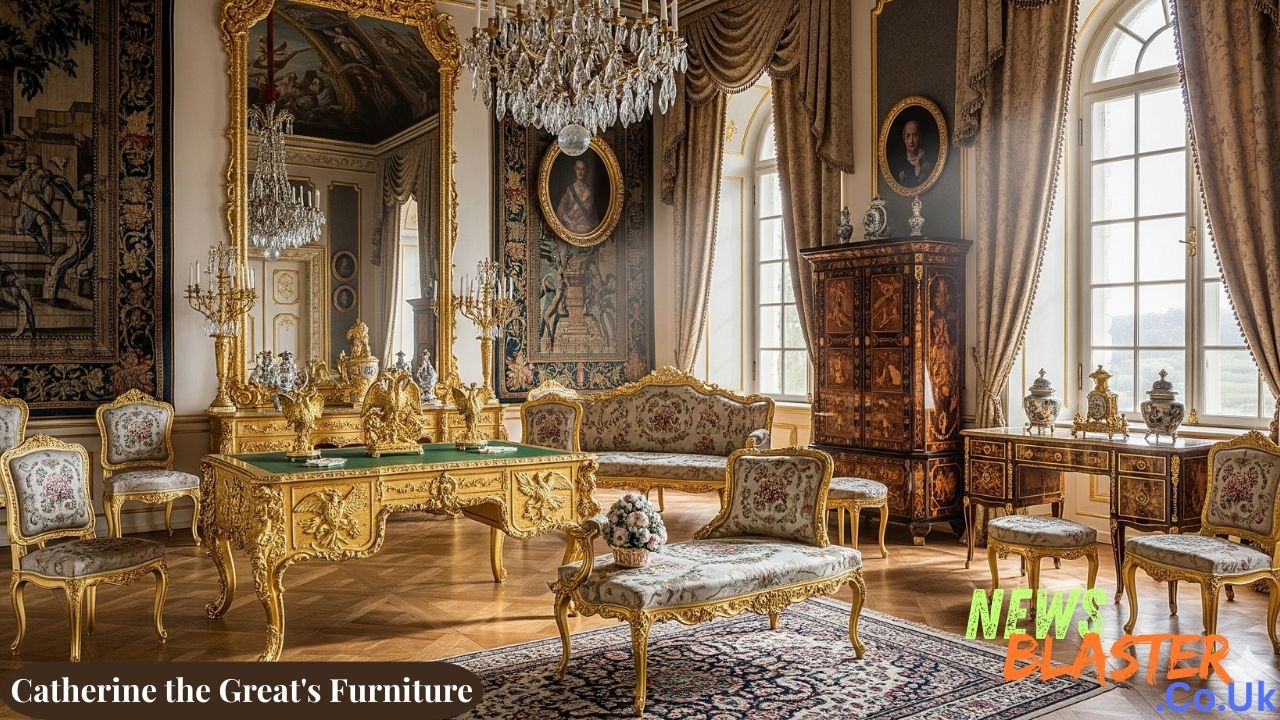Introduction
Catherine II of Russia, who ruled from 1762 to 1796, transformed the Russian Empire into a cultural powerhouse that rivaled the greatest European courts. Known for her sophisticated taste and passion for the arts, Catherine the Great’s furniture collection represents one of history’s most impressive displays of imperial luxury and artistic refinement.
The Empress served as a devoted patron of the arts and an avid collector of decorative objects, amassing furniture pieces that would define Russian imperial style for generations. Her furniture collections showcased not only her personal aesthetic preferences but also her political ambitions to position Russia as a leading European cultural force.
During Catherine’s era, imperial Russian furniture underwent a remarkable transformation, blending traditional Russian craftsmanship with the finest European design influences. The result was a distinctive style that captured the grandeur and sophistication befitting one of history’s most powerful rulers.
Historical Context
The 18th century marked a pivotal period in European furniture design, with French Rococo and Neoclassical styles dominating aristocratic tastes across the continent. Catherine the Great strategically embraced these trends, understanding that furniture served not merely functional purposes but also political ones.
French Rococo and Neoclassical styles found their way into Russian imperial courts through Catherine’s deliberate cultural policies. She recognized that surrounding herself with the finest European-style furnishings would elevate Russia’s international prestige and demonstrate her empire’s wealth and sophistication.
The political and cultural reasons behind Catherine’s furniture acquisitions extended beyond personal preference. Each carefully selected piece served to reinforce her legitimacy as an enlightened European monarch while establishing Russia as a serious cultural competitor to France and other Western powers.
Major Collections and Acquisitions
Catherine the Great’s furniture acquisitions occurred through various channels, including purchases during European diplomatic missions and direct commissions from renowned craftsmen. Her agents traveled extensively, securing the finest pieces available from Europe’s most celebrated furniture makers.
The integration of Western styles with Russian imperial traditions created a unique aesthetic that distinguished Catherine great furniture from purely European counterparts. Russian craftsmen learned to incorporate European techniques while maintaining elements that reflected their homeland’s cultural heritage.
Notable pieces were specifically acquired for different palaces, with each residence receiving furniture that complemented its architectural style and intended function. Catherine understood that each palace required distinct furnishing approaches to serve their varied ceremonial and residential purposes.
Signature Styles and Characteristics
French Influence
During her early reign, Catherine the Great’s furniture displayed strong Rococo elements, featuring the ornate curves and decorative flourishes characteristic of Louis XV style. These pieces often incorporated gold gilding, elaborate carvings, and luxurious upholstery that reflected French court aesthetics.
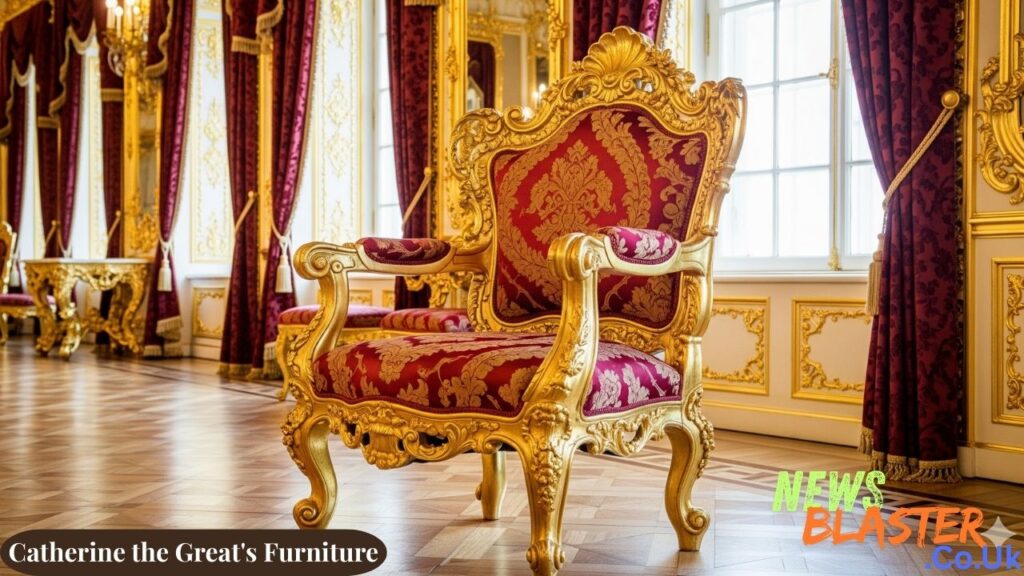
The transition to Neoclassical style occurred as European tastes evolved toward more refined, symmetrical designs. Catherine’s later furniture acquisitions showed clear Louis XVI influences, with cleaner lines and classical motifs that reflected Enlightenment ideals of reason and order.
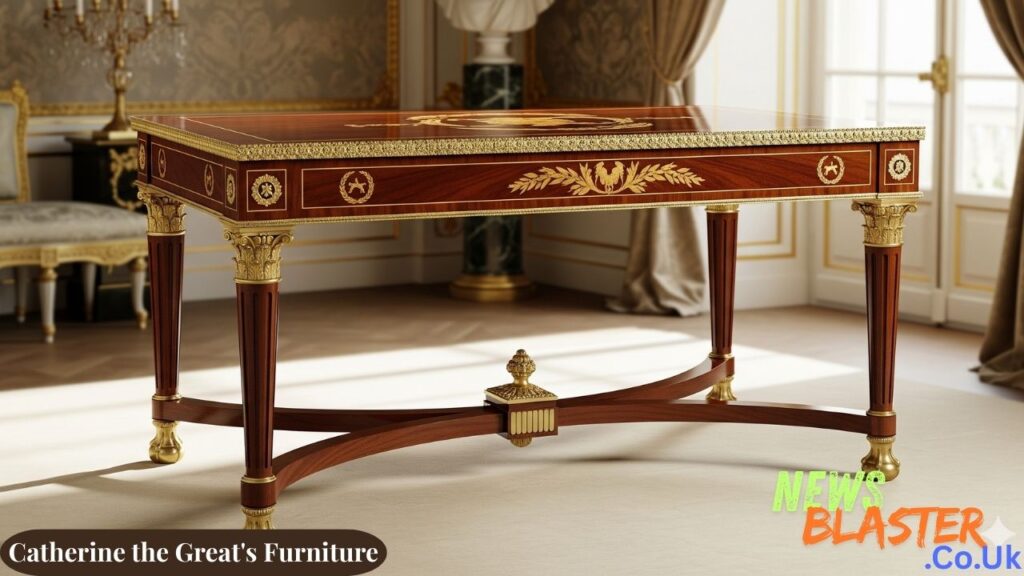
Louis XV and Louis XVI inspired pieces in Catherine’s collection demonstrated her keen awareness of European fashion trends and her desire to ensure Russian imperial courts remained current with Continental developments.
Russian Imperial Adaptations
Catherine the Great’s furniture often featured indigenous Russian materials, including amber, malachite, and other precious stones unique to her empire. These materials added distinctly Russian character to otherwise European-inspired designs.
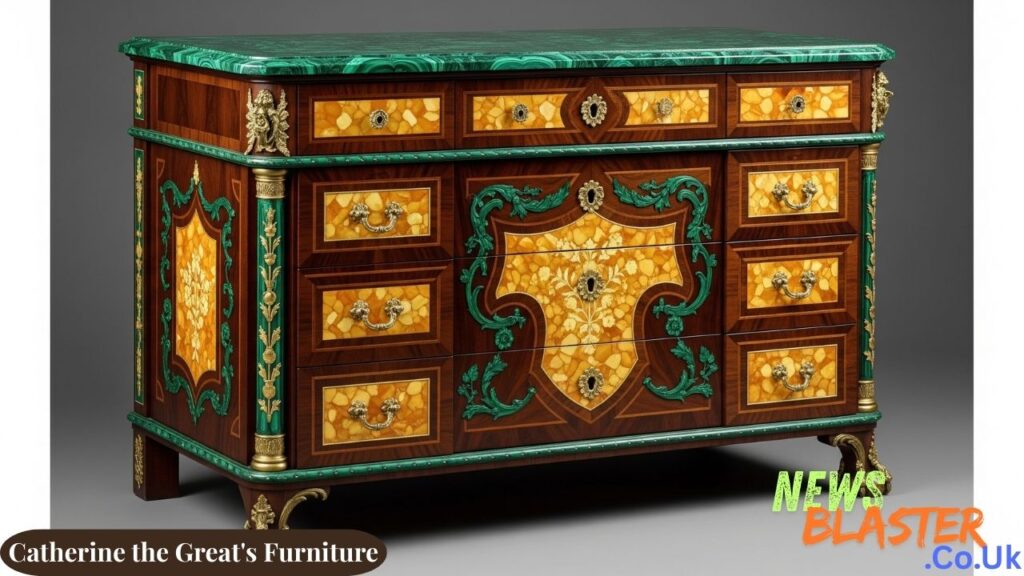
The incorporation of Russian decorative motifs created furniture pieces that honored local traditions while maintaining international sophistication. Traditional Russian symbols and patterns were skillfully woven into Western furniture forms.
The scale and grandeur of Catherine the Great furniture suited the massive imperial palaces, with pieces designed to fill enormous rooms and accommodate large ceremonial gatherings. This supersizing of European furniture styles created an unmistakably Russian imperial aesthetic.
Notable Furniture Pieces and Sets
Catherine the Great’s furniture collection included magnificent ceremonial throne furniture designed to project royal authority and divine right. These pieces combined functional seating with symbolic elements that reinforced her imperial status.
Drawing room and salon sets provided elegant settings for diplomatic receptions and cultural gatherings. These furniture ensembles created sophisticated environments where Catherine could entertain European intellectuals and demonstrate Russian cultural refinement.
Bedroom furniture and private apartment pieces revealed Catherine’s personal tastes away from public ceremonial spaces. Even in private, her furniture choices maintained the luxury and quality that defined her public image.
catherine the great’s furniture table pieces served both practical and decorative purposes, with dining tables designed to accommodate elaborate state banquets and entertaining furniture that facilitated the sophisticated social life of the Russian court.
Palaces and Their Furnishings
Winter Palace (Hermitage)
The Winter Palace state rooms showcased Catherine the Great’s most impressive furniture arrangements, with each room carefully designed to create specific atmospheric effects. The furniture in these spaces demonstrated Russian imperial power through sheer magnificence and artistic excellence.
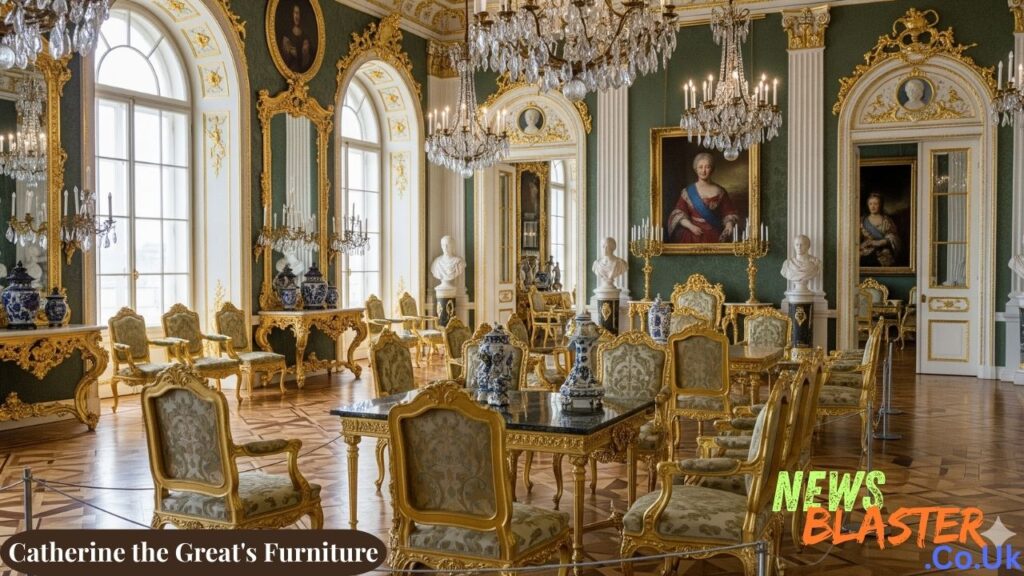
Private apartments within the Winter Palace featured more intimate furniture choices that reflected Catherine’s personal preferences while maintaining appropriate imperial dignity. These spaces revealed the Empress’s taste for comfort combined with luxury.
Catherine Palace (Tsarskoye Selo)
The famous Amber Room required specialized furniture and decorative elements that complemented its unique amber paneling. Catherine the Great’s furniture picture collections from this period show how carefully each piece was selected to harmonize with the room’s golden magnificence.
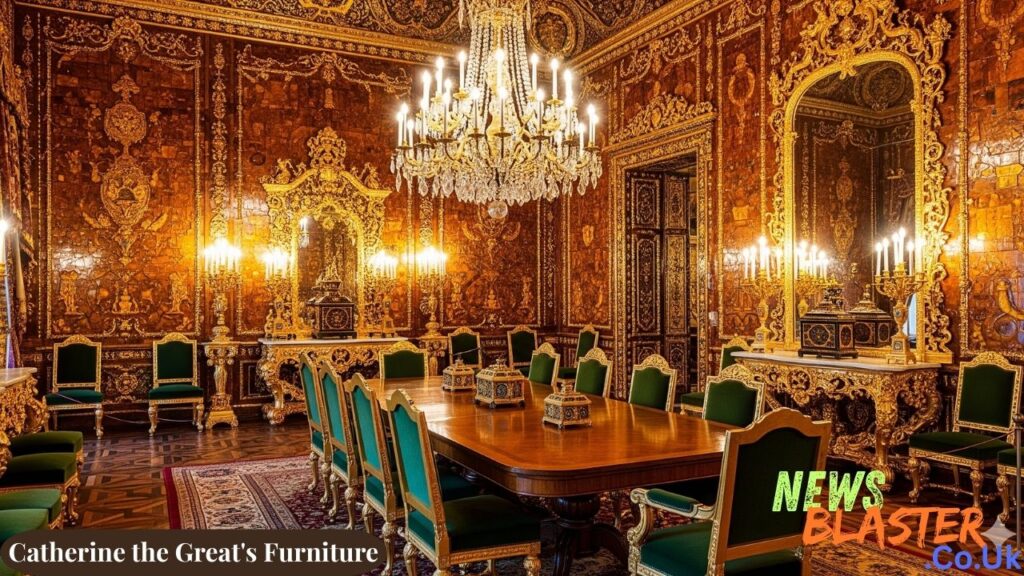
Garden palace furniture styles at Tsarskoye Selo reflected the more relaxed atmosphere of summer residences, though they maintained the quality and craftsmanship expected in imperial settings.
Other Imperial Residences
Peterhof, Gatchina, and other palace furnishings demonstrated Catherine’s commitment to maintaining consistently high standards across all imperial residences. Each location received furniture appropriate to its specific function and architectural character.
Craftsmen and Suppliers
European furniture makers commissioned by Catherine included some of the most celebrated artisans of their time. These craftsmen created pieces specifically designed for Russian imperial use, adapting their techniques to meet Catherine’s exacting standards.
Russian craftsmen who worked on Catherine the Great’s furniture learned from European masters while developing their own distinctive approaches. This cultural exchange enriched Russian decorative arts traditions and established a foundation for future imperial furniture production.
Notable workshops contributed to Catherine’s collection through both direct commissions and competitive selection processes. The Empress encouraged excellence by rewarding the finest craftsmanship with continued imperial patronage.
Legacy and Influence
Catherine the Great’s furniture influenced subsequent Russian imperial furniture styles well into the 19th century. Her aesthetic choices established precedents that future rulers would follow and adapt to their own tastes and requirements.
Many pieces from Catherine’s collection survive today in museums and private collections worldwide. These catherine the great’s furniture pictures provide invaluable insights into 18th-century imperial Russian court life and artistic achievement.
Catherine’s influence on Russian decorative arts patronage extended far beyond her lifetime, establishing traditions of imperial collecting that continued until the Russian Revolution. Her approach to furniture acquisition became a model for how rulers could use decorative arts to project cultural authority.
Modern Significance
Museum collections housing Catherine the Great’s furniture offer contemporary audiences opportunities to appreciate the artistic and historical significance of these remarkable pieces. Major institutions worldwide preserve and display examples of catherine the great’s furniture pictures that document this important cultural heritage.
Scholarly research continues to uncover new information about Catherine’s furniture collections, with historians and art experts working to catalog and analyze surviving pieces. These efforts ensure that knowledge about Catherine great furniture remains available for future generations.
The cultural and historical importance of understanding 18th-century imperial life through Catherine the Great’s furniture extends beyond mere aesthetic appreciation. These pieces provide windows into the political, social, and cultural dynamics that shaped one of history’s most fascinating imperial courts.
Catherine the Great’s furniture represents more than luxury objects; it embodies the ambitions, tastes, and cultural vision of one of history’s most remarkable rulers. Through her carefully curated collections, she created environments that supported her political goals while establishing artistic standards that continue to inspire admiration centuries later.
Also Read: Complete Guide to Tractor Supply Sales Associate Job Description

